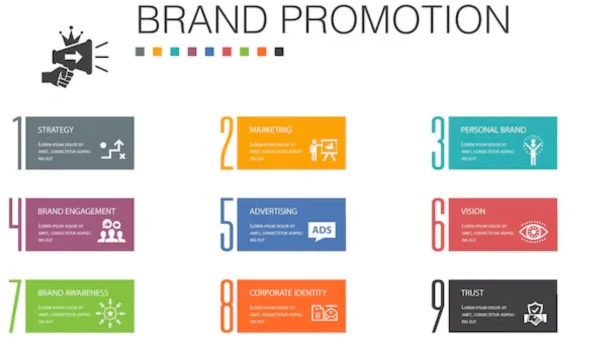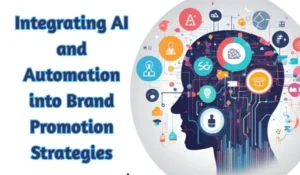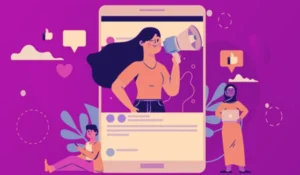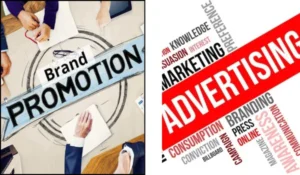In today’s highly competitive digital world, building a strong brand isn’t enough — you need a strategic brand promotion plan to increase visibility, attract loyal customers, and drive sales. Whether you’re launching a new brand or scaling an existing one, a well-crafted brand promotion plan serves as your roadmap to consistent and impactful marketing.
This article will walk you through the key components of a successful brand promotion plan, provide a template you can start using today, and explain why hiring an experienced branding expert is crucial to executing it effectively.
📌 What is a Brand Promotion Plan?
A brand promotion plan is a structured strategy that outlines how, where, and when a business will communicate its brand message to its target audience. It combines marketing channels, content, timing, budget, and performance goals to ensure that your brand gets the right exposure at the right time.
Without a plan, your promotion efforts can be disjointed, ineffective, and wasteful — leading to poor results and missed opportunities.
✅ Benefits of a Brand Promotion Plan
Ensures message consistency across all platforms
- Helps you target the right audience with tailored campaigns
- Saves time and marketing budget
- Sets clear KPIs and success metrics
- Builds long-term brand equity and customer trust
🧭 Step-by-Step Guide to Create a Brand Promotion Plan

1. Define Your Brand Identity
Before you promote, make sure you’re clear on what your brand stands for:
- Mission & vision
- Brand personality (e.g., professional, friendly, luxurious)
- Unique selling proposition (USP)
- Brand voice & tone
- Logo, color palette, and typography
📌 Example: If you run a sustainable clothing brand, your tone may be warm and conscious, with earthy colors and nature-inspired visuals.
2. Identify Your Target Audience
Your brand message should be tailored to specific customer segments. Create buyer personas based on:
- Age, gender, income
- Location
- Interests & habits
- Problems they face
- Preferred platforms (Instagram, YouTube, LinkedIn, etc.)
- Knowing who you’re speaking to helps you promote more efficiently.
3. Set SMART Promotion Goals
Your goals should be:
- Specific
- Measurable
- Achievable
- Relevant
- Time-bound
📝 Example goals:
- “Increase Instagram engagement by 40% in 90 days”
- “Generate 500 leads from Google Ads in 2 months”
- “Grow YouTube subscribers from 1,000 to 2,000 in Q3”
4. Choose the Right Promotion Channels
Select marketing channels based on where your audience spends time and what aligns with your goals:
| Channel | Best For | Examples |
|---|---|---|
| Social Media | Brand awareness, engagement, storytelling | Instagram, LinkedIn, Facebook |
| Paid Advertising | Lead generation, conversions | Google Ads, Meta Ads, YouTube Ads |
| SEO & Blogging | Organic traffic, authority building | WordPress, Medium |
| Influencer Marketing | Trust building, niche exposure | Instagram influencers, YouTubers |
| Email Marketing | Lead nurturing, retention | Mailchimp, HubSpot |
| Events & Webinars | Brand positioning, direct engagement | Zoom, in-person expos, panels |
5. Craft Your Messaging & Content Strategy
Create promotional content that aligns with:
- Your brand voice
- Target audience needs
- Campaign goals
- Content types to include:
- Brand story videos
- Product benefits breakdowns
- Behind-the-scenes content
- Offers and limited-time deals
- Client testimonials and reviews
Don’t forget to repurpose content across platforms (e.g., turn a blog post into a carousel for Instagram).
6. Allocate Your Budget
Based on your business size and stage, assign budgets to:
- Ad campaigns
- Content creation
- Tools and software
- Influencer partnerships
- Freelancers or agency support
- Start small, track ROI, and scale what works.
7. Track KPIs & Measure Results
Regularly review the performance of each channel and content piece. Use tools like:
- Google Analytics 4
- Meta Ads Manager
- YouTube Studio
- HubSpot or CRM tools
- Track KPIs such as:
- Impressions
- Engagement rate
- Leads generated
- Cost per acquisition (CPA)
- Conversion rates
🧾 Brand Promotion Plan Template (Free to Use)
| Section | Details |
|---|---|
| Brand Name | GreenLeaf Eco Wear |
| Target Audience | Eco-conscious millennials aged 25–35, urban India |
| Promotion Goals | 1. Grow Instagram by 2K followers in 3 months 2. Generate 300 email leads |
| Key Channels | Instagram, Google Ads, SEO, Influencer marketing |
| Content Plan | Weekly reels, blog posts, email newsletters, product videos |
| Monthly Budget | ₹50,000/month |
| Tools to Use | Canva Pro, ChatGPT, Mailchimp, Meta Ads, Google Analytics |
| Tracking KPIs | Engagement rate, lead count, ROI, conversions |
👨💼 Why You Need an Experienced Person for This Job
Creating and executing a brand promotion plan isn’t just about writing content or running ads. It involves understanding psychology, platforms, design, copywriting, budgeting, and performance analytics — and weaving them into a cohesive, well-timed strategy.
Here’s why an experienced expert is invaluable:
✅ 1. Deep Understanding of Brand Psychology
An experienced professional knows how to connect emotionally with your audience — using color psychology, trust signals, storytelling, and more.
✅ 2. Strategic Tool Selection
They know which tools to use for your business stage — from choosing the right ad platform to setting up the ideal CRM for lead management.
✅ 3. Avoiding Costly Mistakes
Inexperienced marketers might waste money on wrong platforms, poorly targeted ads, or inconsistent messaging — which can harm your brand’s image and ROI.
✅ 4. Execution with ROI Focus
Experienced brand promoters can test, analyze, and optimize campaigns — ensuring every rupee you spend drives measurable results.
🧠 Final Thoughts
A well-structured brand promotion plan is the backbone of successful marketing in 2025. It ensures your brand message cuts through the noise and connects with your audience — while maximizing your resources and budget.
But planning is just the beginning. Flawless execution requires experience, creativity, and marketing intelligence. So if you’re serious about scaling your brand, consider working with a brand promotion expert who understands both the art and science of modern marketing.



